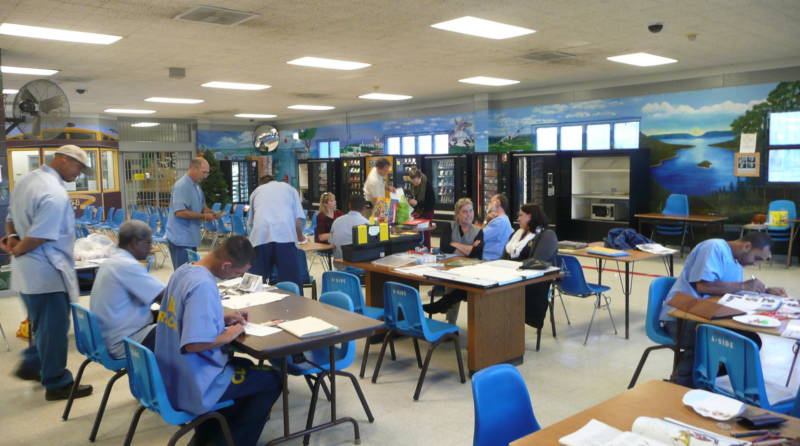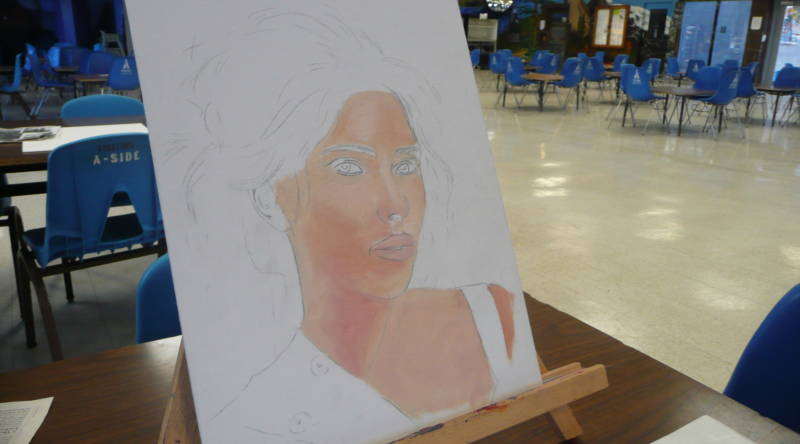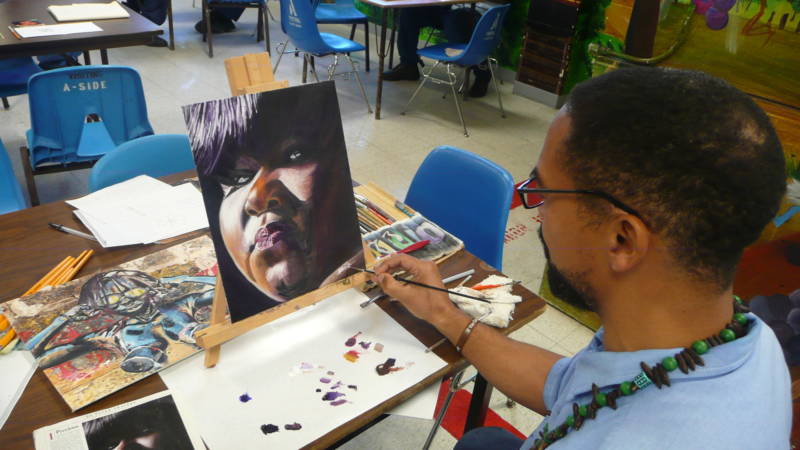Solano State Prison inmate Greg Colignese, 45, is taking a drawing and painting class. About 20 others prisoners sit around tables in one of the prison’s recreation rooms. They’re working on all kinds of art projects like print-making, pencil sketching and painting.
Colignese’s subject is a headshot of actress Scarlett Johansson, based on a photograph on the cover of Interview magazine. His medium of choice? Oil. Colignese mixes different colored paints in an effort to capture the perfect cotton candy-colored hue of the Hollywood actress’ skin color. “I’ve always wanted to work with oil,” says Colignese. “I’ve been incarcerated 25 years and I’ve never had an opportunity to do oil.”
Fine arts education may be one of the last things you think of when it comes to rehabilitation in California’s state prisons. But prisoners across the California Department of Corrections’ 34 facilities once had access to theater, music, creative writing and visual arts classes. The classes were offered as part of a program called Arts-In-Corrections — and it actually worked.
Now after a nearly decade long hiatus, the program has been making a slow comeback over the past two years. 18 of the state’s prisons participated in a re-pilot of the program.

Colignese, who is in prison for second-degree murder, is no stranger to these arts classes. He says he first started out learning creative writing with Arts-In-Corrections. Colignese says now he’s glad to have art back in his life. “In a lot of ways I feel that this program actually saved my life because had I stayed on the path I was on who knows what would’ve happened,” Colignese says.



